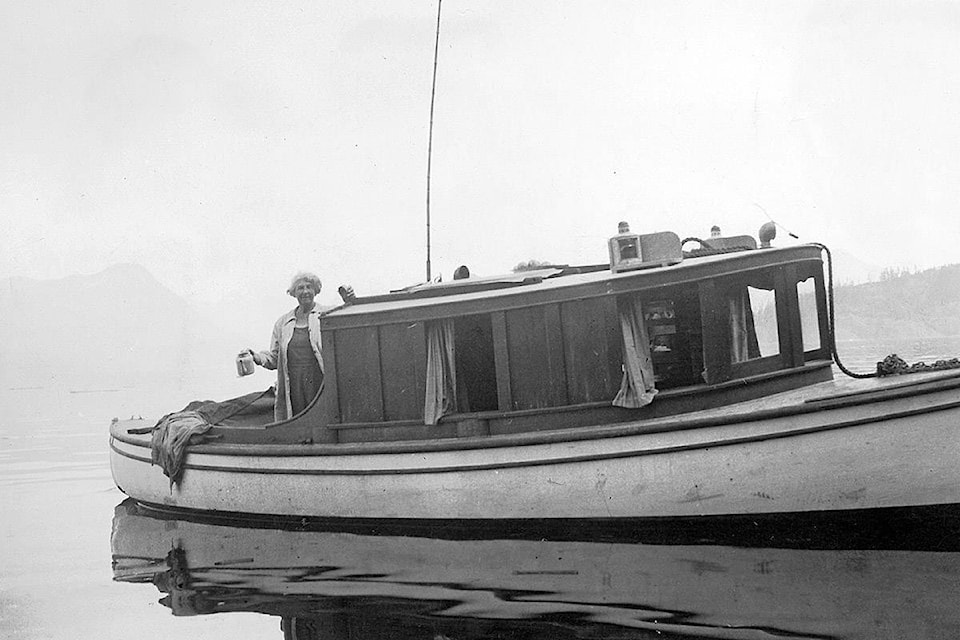By Erika Anderson,
Museum at Campbell River
One can easily lose track of time looking at old photographs. Recently I was researching Desolation Sound and came across the Francis & Amy Barrow Collection.
Almost 100 of their photographs can be found on the Museum at Campbell River’s website, over half of which are captivating portraits of residents of the Coast. In the early part of the 20th century, cameras were not as commonplace as they are today, with equipment being cumbersome, expensive and fragile. So who were Francis and Amy Barrow, and how did they come to produce such a wonderful collection of photographs?
Francis and Amy emigrated from England and settled on a farm on the Saanich Peninsula in 1905. They had a 26’ long boat, the Toketie, specially built and outfitted so that they could spend their summers cruising Georgia Straight. Amy Barrow had “incomes from home,” sufficient family wealth to support a lifestyle of hobby farming and summers exploring with their boat. They kept detailed journals of their travels, although only the ones from 1933-1941 have survived. They were seasonal visitors, but they made friends easily and became locals.
Beth Hill wrote a book called Upcoast Summers about the Barrows, and in it she says that the most common phrase in their journals is “They insisted we stay for dinner.” The photos reflect this. The subjects look at ease and not as though they are posing in the presence of formal company. The result is that we have through the Barrows’ journal entries and photographs a rare glimpse into the lives of the people living in these remote areas.
This collection is well-known in part because of the keen interest that the Barrows had in First Nations history. Many of the photos in the collection document sites that showed evidence of past First Nations use. The Barrows spent years carefully recording and mapping petroglyphs, pictographs and village sites that they came across in their travels. Especially in the cases of pictographs that fade with time, the records kept by the Barrows are invaluable. They are preserved at the Royal BC Museum.
While exploring some of the journals, I came across an entry about when the Barrows encountered Henry Twidle, another keen photographer whose collection has ended up in the museum’s archives and who has helped to document the history of the area. Apparently, some of the photos captured by both Twidle and Barrow were taken with the same camera!
A journal entry written by the Barrows dated August 21, 1936 explains how this happened: “Left for Granite Bay. I bought Twidle’s Thornton Pickard Cine camera, which seems to be just what I was looking for. Twidle has run the store here since 1911. Mrs. Twidle gave us two loaves of home-made bread.”
Other photos include that of a striking young woman in a swimsuit feeding one of Tom Brazil’s pet deer at Blind Bay on Hardy Island, a portrait of a decidedly unamused Phil Lavigne at his homestead at Prideaux Haven, a beautifully composed scenic shot of Bute Inlet with the boat Five B.R. in the foreground, and a portrait of the elderly Mr. and Mrs. Grace in Loughborough Inlet that demonstrates Mr. Grace’s exceedingly fine posture. It’s certainly ample fodder for a rainy afternoon imagining days gone by.
If you want to explore these photos yourself, you can go to http://islands.crmuseum.ca/category/gallery/francis-amy-barrow-fonds
